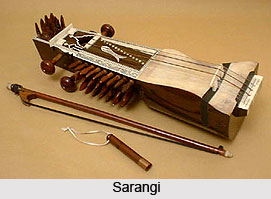 Gamaka are the adornments used in the arrangement of Indian classical music. It is also known as gamakam or gamak. Gamaka defines the exclusive quality of every raaga which renders them a vital position in addition to being ornamental in Indian music. Nearly all Indian musical treatises have a section dedicated to listing, characterising and describing gamakas.
Gamaka are the adornments used in the arrangement of Indian classical music. It is also known as gamakam or gamak. Gamaka defines the exclusive quality of every raaga which renders them a vital position in addition to being ornamental in Indian music. Nearly all Indian musical treatises have a section dedicated to listing, characterising and describing gamakas.
Features of Gamaka
There is no equivalent of Gamaka in Euro-American music. Musical notes are so produced as to touch upon the lower as well as the upper adjacent notes by resorting to a vibratory mode of vocalizing. The reproduction of Gamaka is critical on most musical instruments as it is a specific vocal sound. It is produced by a very fast back-and-forth oscillation between lower and upper pitch, during which the diaphragm rhythmically contracts and relaxes. An alternative could be a trill or other ornaments that focuses around the centre pitch.
Types of Gamaka
In Hindustani music there are presently five Gamakas namely kampita, sfurita, murki, khatkaa or gadgadita or jamjamaa and aandolan. In Carnatic music four Gamakas have been specified as Nokku, Odukkal, Kampita and Orikai.
Gamaka in Different Musical Instruments
It is obvious that the vocal template most closely resembles with the sarangi part. The sarangi indeed "shadows" the voice, and since the Gamaka effect can be emulated fairly well on a sarangi, reproduction is not a problem at all. On the other hand, the harmonium player cannot alter the pitch of the sound that he is producing, after striking the key once. Therefore, it is not possible for him to inflect pitch, let alone step-lessly glide back and forth between two pitches. Instead, he employs appoggiaturas and quick returning notes in order to demarcate the narrow framework of the tonal spectrum that he is covering. By subdividing beats into rhythmic units that are interlocking with, the Sarangi`s melodic line, he thickens the heterophony music texture and at the same time intertwines the harmonium`s part with the remaining parts. In doing so, he in one aspect achieves an overall effect that is not too far from that of the vocal lines gamaka: rather than proposing a horizontal melodic line, he seems to produce a sound band, saturating the overall musical texture.
Although the immediate listening impression is different, for the aural difference between a glide between two pitches and their rapid repetition cannot be resolved. While aurally, then, there remains an audible difference between the harmonium`s part, on the one hand, and the soloist`s and the sarangi`s part on the other, and while the techniques employed respectively are necessarily of a differing nature in either case, both try to achieve the same effect musically. Here, the original sound pattern cannot be imitated by the harmonium player, but he does provide a musical unit that is structurally and musically in just the same line as the model pattern.




















